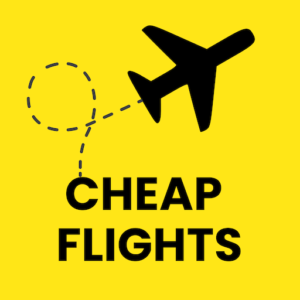Budget Airlines: Develop Content Around Popular Budget Airlines and Their Offerings
Introduction
Definition of Budget Airlines
Budget airlines, also known as low-cost carriers (LCCs), are airlines that offer significantly lower fares compared to traditional carriers. They achieve this through cost-saving measures like reduced services, simpler fare structures, and optimized operations.
Overview of Budget Airlines in Today’s Market
In today’s global aviation market, budget airlines play a vital role in making air travel accessible to a broader audience. They have disrupted the industry with their innovative business models, allowing more people to travel for leisure and business.
The Evolution of Budget Airlines
Historical Background
Budget airlines emerged in the 1970s, with Southwest Airlines often cited as the pioneer in this space. The concept gradually spread to other regions, including Europe and Asia, leading to a global revolution in air travel.
Key Milestones in the Industry
Significant milestones include the deregulation of the U.S. airline industry, the rise of Ryanair in Europe, and the growth of AirAsia in Southeast Asia. These airlines changed the landscape, influencing traditional carriers to adapt their models.
Key Players in the Budget Airline Industry
Major Budget Airlines Worldwide
Notable budget airlines include Ryanair, EasyJet, and Southwest Airlines. These airlines have maintained strong market positions through innovative strategies and competitive pricing.
Regional Budget Airlines
Each region has its own set of budget airlines, such as IndiGo in India, Jetstar in Australia, and Gol in Brazil. These carriers cater to regional markets, often leading in market share.
Budget Airlines‘ Unique Offerings
Affordable Fares
A primary attraction of budget airlines is their remarkably affordable fares. These airlines achieve this by optimizing their operations and concentrating on delivering essential services without compromising on safety or convenience. They employ cost-saving measures, such as flying a single type of aircraft for efficiency, reducing frills, and embracing innovative ticketing systems. This lean approach enables them to pass on significant savings to passengers, making air travel possible for more people, from budget-conscious tourists to frequent business travelers.
Ancillary Services and Add-ons
Budget airlines understand that one size doesn’t fit all when it comes to flying. Therefore, they offer a range of ancillary services and add-ons that empower passengers to personalize their journeys according to their preferences and budgets. Whether it’s selecting a seat with extra legroom, enjoying an in-flight meal, or opting for priority boarding, these customizable options ensure that travelers get what they need. This approach keeps the base fare low while giving passengers the flexibility to choose additional services that add value to their travel experience.
Point-to-Point Routes
Unlike traditional carriers that rely heavily on hub-and-spoke networks, budget airlines primarily operate point-to-point routes. This strategy enables them to connect passengers directly between popular city pairs without the need for layovers or complicated connections. The result is a more straightforward and often quicker journey, which is especially appealing for short-haul travelers who prefer not to waste time on stopovers. This point-to-point model also allows budget airlines to serve smaller airports, reducing airport fees and potentially leading to even lower ticket prices.
Comparing Budget Airlines to Traditional Carriers
Differences in Business Models
Budget airlines and traditional carriers are built on very different business models. Budget airlines emphasize efficiency and keeping costs down, tailoring their services for passengers seeking low fares. By simplifying their operations and standardizing their fleet, they manage to offer significantly cheaper tickets.
Traditional carriers, on the other hand, focus on offering a more luxurious travel experience. They provide a range of services, including in-flight entertainment and various cabin classes, while connecting travelers through a hub network of major airports. Although this approach entails higher operating costs, it also offers a more comprehensive travel experience.
Cost Structure and Pricing
Budget airlines are highly adept at controlling costs, which is why they can offer lower fares. They do this by focusing on essential services, using secondary airports, and charging extra for add-ons like baggage and seat selection. This lean operational model makes flying more affordable.
Traditional airlines have a more intricate cost structure due to their broader networks and range of services. They have more diverse fleets, provide complimentary amenities, and often offer loyalty programs, which all add to higher fares. However, these higher costs often translate into a more comfortable and comprehensive flight experience that budget airlines don’t typically match.
In the end, choosing between budget airlines and traditional carriers boils down to personal priorities. If cost is your main concern, budget airlines are a smart choice. For those who value comfort and service, traditional airlines might be worth the extra spend.
Customer Experience with Budget Airlines
Advantages for Travelers
Budget airlines provide travelers with cost-effective options for short-haul and long-haul flights. They offer flexibility in booking and a wide range of destinations.
Common Misconceptions and Realities
While budget airlines are often criticized for extra fees and limited services, they still provide a safe and reliable way to travel. Understanding these realities helps travelers make informed decisions.
Budget Airlines: Safety and Reliability
Regulatory Compliance
Budget airlines operate under the same regulations as traditional carriers. This ensures they meet strict safety standards enforced by aviation authorities.
Safety Records
Despite offering low-cost travel, budget airlines maintain strong safety records. They invest heavily in pilot training, aircraft maintenance, and other safety measures.
How to Maximize Your Savings with Budget Airlines
Tips for Booking
To get the best deals on budget airlines, book early, be flexible with travel dates, and subscribe to fare alerts. Many airlines offer promotions that significantly reduce costs.
Navigating Add-On Fees
Carefully review the fees associated with budget airlines. Opting out of non-essential services and planning for carry-on luggage can help reduce overall travel costs.
Challenges Facing Budget Airlines
Regulatory Challenges
Budget airlines face a myriad of regulatory challenges that can significantly impact their operations. Restrictions on flight routes can limit their growth, making it harder for them to enter new markets or adjust flight schedules in response to demand. Adhering to strict safety standards often necessitates costly compliance efforts, which can strain the finances of low-cost carriers.
Labor laws also vary widely by country, influencing how budget airlines manage their workforce and labor expenses. To ensure smooth operations without affecting profitability, they must skillfully navigate these complex regulatory landscapes. The risk of fines or operational constraints due to non-compliance adds another layer of difficulty.
Economic and Environmental Pressures
Economic and environmental pressures also present significant challenges for budget airlines. Economic downturns lead to reduced consumer spending, resulting in fewer travelers and narrower profit margins. Budget airlines must find ways to keep fares attractive while maintaining operational viability.
Environmental regulations are becoming increasingly stringent, prompting airlines to adopt greener practices. This often requires investment in more fuel-efficient aircraft and implementing carbon offset measures. While these steps are vital for sustainability, they can add financial strain to budget airlines.
Changing consumer preferences for more environmentally friendly travel options further adds to these challenges. Despite this, budget airlines have proven resilient, constantly innovating to stay competitive and continue offering affordable flights.
Future Trends in Budget Airlines
Growth Potential
Budget airlines are poised for substantial growth, driven by expanding into new markets and continuously refining their business models. The rising demand for affordable air travel has opened doors for budget airlines to explore previously untapped markets. By maintaining a lean operational structure and finding innovative ways to cut costs, these airlines can offer tickets at prices that attract a broader audience. This growth is further fueled by an increasing number of travelers looking for cost-effective options, especially in emerging markets where air travel is gaining popularity.
In addition, budget airlines are expected to expand their route networks, including both domestic and international flights, as they seek to capitalize on emerging travel trends. This growth trajectory suggests that budget airlines will continue to be a driving force in the aviation industry, connecting more people to destinations that were once out of reach.
Technological Advancements
Technology is playing a crucial role in shaping the future of budget airlines. Improvements in fuel efficiency are leading to significant cost reductions for airlines, allowing them to pass these savings on to customers. Modern aircraft with better fuel efficiency, lightweight materials, and more efficient engines are becoming the new standard for budget airlines, helping them reduce their environmental impact while maintaining lower operating costs.
Digital innovations, such as automated check-in and mobile boarding passes, streamline the customer experience by making travel more convenient and reducing operational costs. Additionally, data analytics help budget airlines optimize their routes, pricing strategies, and in-flight services to align with passenger preferences. These technological advancements not only help budget airlines cut costs but also enhance the overall passenger experience.
Overall, the future looks bright for budget airlines as they continue to adapt to evolving market demands through strategic growth and technological innovation.
Conclusion
Budget airlines have transformed the aviation industry, making air travel accessible to more people worldwide. They offer cost-effective options, innovative business models, and a reliable way to travel. By understanding their offerings and maximizing savings strategies, travelers can enjoy budget airlines while managing expectations.
FAQs
What is a budget airline?
A budget airline offers low-cost air travel with reduced services to provide affordable fares. They focus on minimizing operational costs and maximizing efficiency.
How do budget airlines keep their fares low?
Budget airlines minimize costs by offering basic services, charging for add-ons, and operating efficient aircraft fleets with point-to-point routes.
Are budget airlines safe?
Yes, budget airlines adhere to the same safety standards as traditional carriers. They maintain rigorous safety protocols and pilot training programs.
How can I find the best deals on budget airlines?
Book early, subscribe to fare alerts, and be flexible with travel dates. Budget airlines often offer promotions and discounts.
What are some common pitfalls when flying with budget airlines?
Extra fees for services like checked baggage and seating can add up. Review the airline’s policies carefully to avoid unexpected costs.












